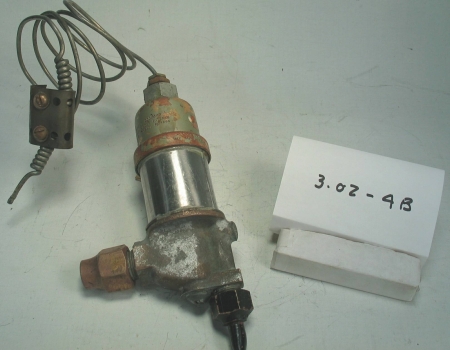Refrigerant Flow Controls – Commercial
A mid 20th century, thermostatic expansion valve, a work horse of the Canadian refrigeration industry through much of the latter part of the century, double bellows construction with wide range superheat adjustment, widely used by original refrigeration equipment manufacturer and for replacement work; made in a wide range of capacities for methyl chloride, Freon 12 and 22, power element and 5 ft. capillary tube, Model 673- M, Detroit Lubricator, circa 1946. [1 of a set of 2, see ID# 187]
Features:
Original superheat bulb clamp
Technical Significance:
This artifact of history, a workhorse of its times in the refrigeration, thermostatic expansion valve field tells the many stories of the explosion of commercial refrigeration applications and their wide adoption in Canada throughout the middle and later years of the the 20th century.
Much of the success of this technology was due to the wide range of capacities and applications built into the design by Detroit Lubricator
Aware of the exploding market in commercial refrigeration applications, as well as the increasing diversity in system designs and engineering design requirements, the manufacturer built the valve around a basic platform that could be readily adapted with changes in orifice size and inlet and outlet connections to suit a wide range of refrigerants [methyl chloride, Freon 12, and Freon 22], temperature applications [low and commercial range] and refrigerating tonnage capacity ratings [1.2 to 4 tons]. It was a success story that led the industry.
The valve would be the darling of refrigeration wholesalers and original equipment manufacturers, because of the range of applications accommodated [see wholesalers catalogue]


